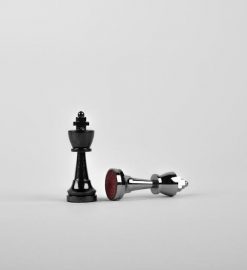olympus om10 manual adapter

Olympus OM10 Manual Adapter⁚ A Guide
This guide will explore the Olympus OM10 Manual Adapter, a crucial accessory for Olympus OM10 camera owners who desire greater control over their photography․ We’ll delve into its purpose, compatibility, usage, benefits, and alternatives, providing a comprehensive overview of this essential tool․
Introduction
The Olympus OM10, released in 1979, is a popular 35mm film camera known for its user-friendly design and features․ However, one limitation of the OM10 is its lack of a manual shutter speed setting․ This means photographers are restricted to aperture-priority mode, where the camera automatically selects the shutter speed based on the chosen aperture and the light meter reading․ For those who crave the creative freedom and control offered by manual shooting, the Olympus OM10 Manual Adapter provides a solution․ This small, yet essential accessory unlocks the full potential of the OM10, allowing photographers to manually select shutter speeds and take their photography to the next level․
What is the Olympus OM10 Manual Adapter?
The Olympus OM10 Manual Adapter is a small, dedicated accessory designed specifically for the Olympus OM10 35mm SLR camera․ It’s a simple yet ingenious device that allows users to manually select shutter speeds on a camera that is otherwise limited to aperture-priority mode․ Essentially, it transforms the OM10 from an automatic exposure camera to one that offers full manual control over shutter speeds․ This adapter is a crucial component for photographers who want to explore the creative possibilities of manual shooting and gain complete control over their exposure settings․
Why Use a Manual Adapter?
The Olympus OM10 Manual Adapter unlocks a world of creative possibilities for photographers․ It empowers them to control the shutter speed, a fundamental aspect of photography that influences motion blur, depth of field, and overall exposure․ By manually selecting shutter speeds, photographers can freeze fast-moving subjects, create intentional motion blur for artistic effects, or fine-tune exposure for specific lighting conditions․ The adapter also allows for experimenting with different shutter speeds to achieve desired effects, leading to more creative and expressive photography․ For photographers who value manual control and enjoy the art of precise exposure, the OM10 Manual Adapter is an indispensable tool․
Compatibility and Features
The Olympus OM10 Manual Adapter is specifically designed for the Olympus OM10 35mm SLR camera, offering a seamless integration with the camera’s existing features․ It plugs into the front of the camera, underneath the rewind knob, and is compatible with the OM10’s aperture priority mode․ The adapter features a plastic body, typically available in black, and offers a range of shutter speeds from 1 to 1/1000 seconds, providing ample flexibility for capturing various subjects and lighting conditions․ Its compact size, measuring 30 x 25 x 15 mm, and lightweight design, weighing only 6g, make it a convenient addition to the camera, without adding significant bulk or weight․
How to Use the Manual Adapter
Using the Olympus OM10 Manual Adapter is a straightforward process․ First, ensure the OM10 is set to “Manual” mode․ Then, attach the adapter to the front of the camera, beneath the rewind knob․ You’ll now have a dial on the adapter that allows you to select the desired shutter speed manually․ This dial offers a range of shutter speeds, from 1 to 1/1000 second, providing control over the exposure time․ With the manual adapter attached and the shutter speed selected, you can now use the aperture ring on your lens to adjust the aperture and achieve the desired depth of field․ The manual adapter will override the camera’s built-in light meter, so it’s essential to use your own judgment or an external light meter to ensure accurate exposure․
Benefits of Using the Manual Adapter
The Olympus OM10 Manual Adapter unlocks a range of benefits for photographers seeking creative control․ Firstly, it grants complete control over shutter speed, allowing you to precisely adjust exposure time for various effects, such as capturing motion blur or freezing fast action․ This manual control is particularly valuable in situations where automatic exposure might not be ideal, such as low-light photography or when you want to experiment with unconventional exposure settings․ Furthermore, the adapter allows you to use the OM10 for shutter-priority or fully manual mode, expanding your photographic possibilities․ While the OM10 is primarily an aperture-priority camera, the manual adapter transforms it into a more versatile tool, enabling you to explore a wider range of shooting techniques․ For photographers who prefer a more hands-on approach, the manual adapter offers the freedom to fine-tune exposure and create images according to your specific vision․
Alternatives to the Manual Adapter
While the Olympus OM10 Manual Adapter is a popular choice for gaining manual control over shutter speed, there are alternative solutions available for photographers seeking similar functionality․ One option is to consider a different camera model that offers built-in manual exposure modes․ Many vintage and modern SLR cameras, including some Olympus models, provide full manual control without the need for an external adapter․ Another alternative is to explore third-party manual adapters designed for the OM10 or other compatible cameras․ These adapters often offer similar functionality to the original Olympus adapter, providing manual shutter speed control․ However, it’s essential to ensure compatibility and quality when choosing a third-party adapter․ Ultimately, the best alternative depends on your individual needs and preferences, as well as the specific features and limitations of your Olympus OM10 camera․

Where to Find the Manual Adapter
Acquiring an Olympus OM10 Manual Adapter can be achieved through various avenues․ Online marketplaces, such as eBay and Amazon, are popular sources for finding both new and used adapters․ Vintage camera stores and specialty retailers often carry a selection of Olympus OM10 accessories, including the manual adapter․ Online auction platforms, such as Catawiki and Live Auctioneers, provide opportunities to bid on rare or collectible adapters․ Additionally, vintage camera forums and communities can be valuable resources for locating adapters from fellow enthusiasts or sellers․ When searching for an adapter, it’s crucial to verify its condition and authenticity to ensure functionality․ Be sure to check for any signs of damage or wear, and compare prices from different sources to find the best deal․ With patience and a bit of research, you can successfully locate an Olympus OM10 Manual Adapter to enhance your photographic experience․
Tips for Using the Manual Adapter
To maximize your experience with the Olympus OM10 Manual Adapter, consider these tips⁚
Familiarize yourself with the adapter’s shutter speed range․ This allows for precise control over exposure, particularly in challenging lighting conditions․
Practice with the adapter in various scenarios․ Experiment with different shutter speeds and aperture combinations to understand the camera’s response and achieve desired results․
Utilize a light meter․ A handheld light meter can provide accurate readings to help determine the appropriate shutter speed and aperture settings for specific lighting situations․
Pay attention to the camera’s viewfinder․ The viewfinder displays the selected shutter speed and provides a visual indication of the exposure settings․
Experiment with different film stocks․ Different film stocks react differently to light, so experimenting with various ISO ratings can enhance your creative control․
By following these tips, you can effectively utilize the Olympus OM10 Manual Adapter and unlock its full potential for creative photography․
Troubleshooting Common Issues
While the Olympus OM10 Manual Adapter is generally reliable, you might encounter some issues․ Here’s how to troubleshoot common problems⁚
Adapter not registering⁚ Ensure the adapter is securely plugged into the camera’s flash socket․ If the adapter doesn’t register, try cleaning the contacts with a soft cloth․
Shutter speed not changing⁚ Verify that the OM10 is set to “Manual” mode․ If the issue persists, check for any loose connections or obstructions within the adapter․
Inaccurate exposure⁚ If the exposure seems off, double-check the light meter’s reading and adjust the shutter speed accordingly․ Consider using a handheld light meter for greater accuracy․
Adapter malfunctioning⁚ If the adapter consistently fails to function, it might need replacement․ Contact a camera repair specialist or search for a compatible alternative․
By addressing these common issues, you can ensure the smooth operation of your Olympus OM10 Manual Adapter and continue capturing stunning images․
The Olympus OM10 Manual Adapter is a valuable addition for photographers who want to unlock the full creative potential of their Olympus OM10 camera․ By allowing manual shutter speed control, the adapter grants greater flexibility and control over exposure, enabling users to achieve precise results in various lighting conditions․
While the OM10 is primarily an aperture-priority camera, the manual adapter transforms it into a fully functional manual SLR, opening up a world of creative possibilities for experienced and aspiring photographers․ It’s a simple yet effective accessory that enhances the OM10’s capabilities and allows for more intuitive and rewarding photography․
Whether you’re a seasoned film photographer or just starting out, the Olympus OM10 Manual Adapter empowers you to take control of your photography and create images that truly reflect your artistic vision․
Resources
For further information and assistance with your Olympus OM10 Manual Adapter, consider these resources⁚
- Olympus OM10 User Manual⁚ The official manual provides detailed instructions on using the camera and its accessories, including the manual adapter․ You can often find PDF versions online or through Olympus’s website․
- Online Forums and Communities⁚ Engage with other Olympus OM10 enthusiasts on online forums and communities․ These platforms offer a wealth of information, tips, and troubleshooting advice, allowing you to connect with fellow photographers who share your interests․
- Vintage Camera Repair Shops⁚ If you encounter issues with your manual adapter or camera, consult with a reputable vintage camera repair shop․ They possess the expertise and tools to diagnose and fix problems, ensuring your equipment remains in working order․
- eBay and Other Marketplace Websites⁚ You can find replacement manual adapters or other Olympus OM10 accessories on eBay, KEH Camera, and similar marketplace websites․ Ensure you purchase from reputable sellers to guarantee the quality and authenticity of the products․
By utilizing these resources, you can enhance your understanding of the Olympus OM10 Manual Adapter and ensure a smooth and enjoyable photography experience․
FAQs
Here are some frequently asked questions about the Olympus OM10 Manual Adapter⁚
- Q⁚ Is the Olympus OM10 Manual Adapter compatible with other Olympus cameras?
A⁚ No, the manual adapter is specifically designed for the Olympus OM10 and is not compatible with other models․ It utilizes a unique connection point on the OM10’s body․
- Q⁚ What shutter speeds are available with the manual adapter?
A⁚ The Olympus OM10 Manual Adapter offers a range of shutter speeds from 1 second to 1/1000 second, providing flexibility for various shooting scenarios․
- Q⁚ Can I use the manual adapter with any lens?
A⁚ The manual adapter works with all Olympus OM-series lenses, allowing you to control shutter speed regardless of the lens you’re using․
- Q⁚ Where can I find a manual adapter if mine is missing?
A⁚ You can often find used manual adapters on eBay, KEH Camera, and other online marketplaces․ Vintage camera repair shops may also have them in stock․
If you have additional questions about the Olympus OM10 Manual Adapter, consult the resources mentioned in the “Resources” section of this guide․



Leave a Reply
You must be logged in to post a comment.